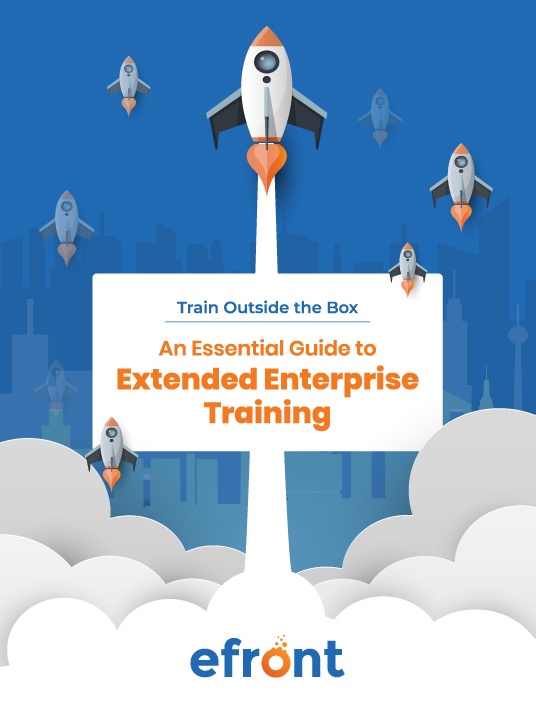How To Avoid These 5 Extended Workforce Training Challenges
There are a million reasons not to climb Mount Everest (i.e. certain death for most of us). Yet every year, thousands attempt to reach its peak. These stubborn trailblazers don’t wake up one day, fly to Nepal and start walking. No, to get to Everest you need time, money (around $45,000 in case you want to try) and a solid training plan. This is a fitting analogy to the challenges of training an extended workforce. Because the idea of training various channel partners and customers can feel a lot like climbing the world's highest mountain. We get it. Like any other training, extended workforce training comes with a unique set of challenges. But it also has many benefits. Benefits that add real value to organizations.

In this article, we’ll discuss 5 extended enterprise training challenges you may face and offer solutions to overcome them.
Quick reminder: As we explained in our previous article, extended enterprise training is training offered to any non-employee who uses or sells your product or service.
1. Reaching Diverse Training Audiences In Different Places
It’s likely that your business has an extended ecosystem in place. And more than likely that they're across the world. Training these various groups (partners, and customers) can feel like an insurmountable task. Especially when you factor in differences in location, time, language, and culture.
But, according to a 2014 eLearning Magazine survey [1], almost half of respondents train the extended workforce. How are so many organizations able to implement training across borders -and see measurable results? In the same way, you’re delivering training to your employees. Online, but with a few significant tweaks.
Solution: Online learning is the gold standard for training the extended ecosystem of a business. By its nature, online training is the most logical and cost-effective solution to train a dispersed network. Your audiences only need a single tool to access training: an internet connection.
2. Training Different Groups With Their Own Needs
Organizations face another extended workforce training challenge: the varying needs of each audience. Like your employees, your extended workforce is diverse. Think about it. Your sales teams don’t need the same training as your product development teams. In the same way, the training needs of a customer will be different to the training needs of resellers. And resellers in Europe might have different training needs than resellers in the U.S. While some training might be appropriate for your entire extended workforce, other training might not be. For some, this complexity feels unscalable.
Solution: Plan well from the beginning. Start by defining and segmenting your training audience. For maximum impact, it’s best to create targeted training based on the needs of each of your audiences.
After establishing a baseline for each group, test the effectiveness of your training. Use a Learning Management System to do this. The LMS will collect learners’ feedback so you can evaluate and adjust your training to suit each audience’s needs.
3. Training Audiences Have Different Motivations
An extended workforce also has different motivations for engaging in your training. While employees complete training as a compulsory part of their job, the motivations of extended enterprise learners can vary. Some will engage in training voluntarily and with high motivation, for others training is compulsory and they come with low motivation. As for customers? Their motivation to pursue training is an entirely separate and distinct from channel partners. Organizations facing this extended workforce training challenge may be tempted to pretend it doesn’t exist. Don’t. Instead, consider this external workforce training challenge as an opportunity. A chance to improve your product, your business processes and ultimately, your profit margins.
Solution: The external workforce will need relevant and meaningful incentives to complete courses. Think of creative ways to attract, engage and support them. An intuitive and powerful Learning Management System, like eFront, has the tools to keep their attention once you get them there.
4. Monitoring Training Is An Administrative Nightmare
Another training challenge that intimidates organizations from extended workforce training is administrative. It can be a struggle to track such complex training and measure its success. Staying up-to-date with the various training ecosystems of your business might seem impossible. At least, that’s what it will feel like for organizations who have not adopted online learning yet.
But most Learning Management Systems have functions that make administration much simpler than you’d expect. If you need advanced functions like a certification program, a robust LMS like eFront can automate your busy work. If you want to measure the success of your extended workforce training, an LMS can test and create reports for you.
Solution: When choosing an LMS, make sure it comes complete with automation, assessment, and customized reporting capabilities. In this way, administrative tasks will be no more a challenging than writing an email.
5. High Costs In Delivering Training To The Extended Workforce
For specific stakeholders, the cost will be the first (and only) extended enterprise training challenge. With good reason. An effective training strategy for the extended workforce isn’t cheap. And if not done right, it won’t be useful either.
But, the measurable benefits of implementing one outweigh the costs every time. Consider the success story of our customer, Gateway Ticketing. After face-to-face training no longer served them, they began delivering online training for business partners and customers. In the first full year of using eFront, 54 different partner and customer organizations took courses. In the second year of implementation, their prepaid self-paced learning subscriptions had already covered the annual licensing costs of the LMS with a profit margin of 60%. For some organizations, the perceived high costs can feel like a barrier to entry.
Solution: Think of the investment in a robust LMS and the development of training courses as the price of entry. Entry to what? Higher revenues, lower risks, and accelerated timelines.
Conclusion
Like all training, training your extended workforce will have its challenges. The varying needs and motivations of learners can be overwhelming. The logistics of delivering and monitoring such a program could be a hassle. And the cost of training might make stakeholders nervous. But with good planning and a great LMS on your team, there is a way to face these challenges head-on.
If you want to be an A-plus student:
Before you close this tab, make a note of the challenges you believe stand in the way of training your extended workforce. Out of these challenges, you will begin creating your must-have functions list to help you choose an LMS.
Or visit our website to discover more about eFront, the high-performing flexible Learning Management System that shapes to fit your needs.
References:
- E-learning User Study 2014








